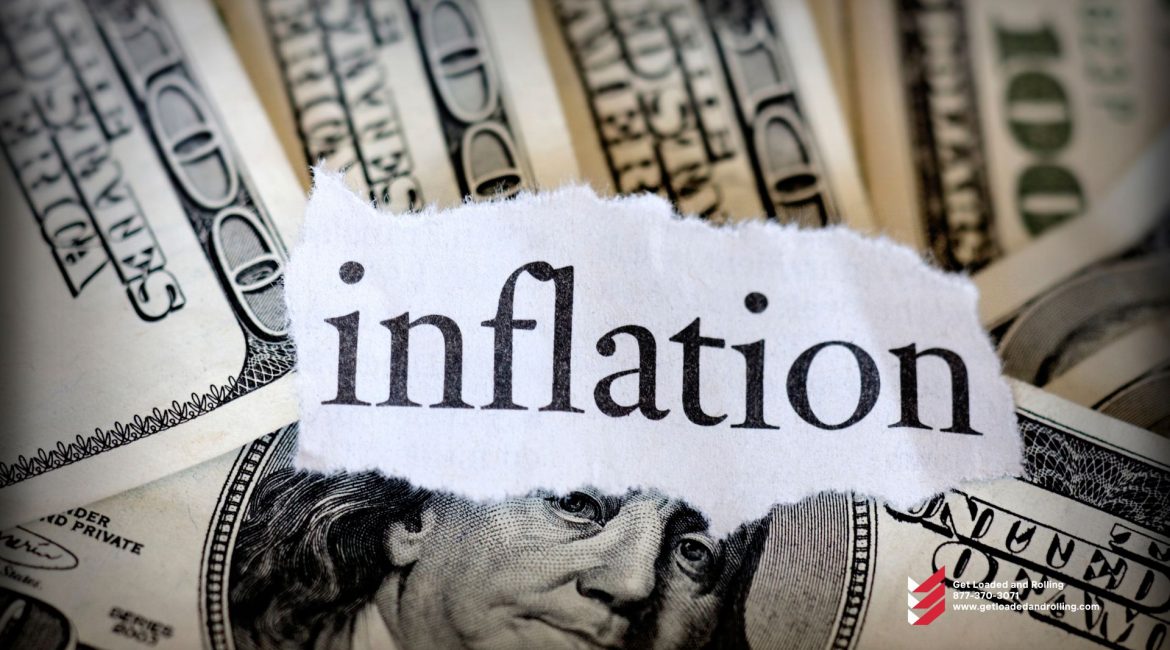Remember when inflation was “transitory” and rising consumer prices were blamed on a supply chain breakdown in 2021? The Fed and macro investors became quite interested in the port crisis. The emphasis on bottlenecks prompted the Federal Reserve Bank of New York to launch the Global Supply Chain Pressure Index (GSCPI) in January.
The implication was that reducing supply chain pressure would cut inflation. That has not been the case.
In 2022, the GSCPI (data here), which roughly matched inflation trends in 2021, fell dramatically. From its peak of 4.31 standard deviations above average in December to 1.47 standard deviations above average in August, the monthly measure has dropped 66%.
Over the same period, the monthly U.S. inflation indicator (headline Consumer Price Index) has risen 17%, from 7.04% (year-over-year increase) in December to 8.26% last month.
Other supply chain indicators are also declining.
Not only is the GSCPI decoupled from inflation.
The Ocean Timeliness Indicator was developed by Flexport as a gauge of supply chain stresses (OTI). The OTI calculates the average number of days it takes cargo to travel from a factory in Asia to the terminal gates in the United States or Europe.
The trans-Pacific eastbound OTI curve generally mirrors the GSCPI. After reaching a high of 113 days in the week ending January 23, it decreased 24% to 86 days in the week ending September 25.
In 2022, spot freight rate indexes have also trended opposite to inflation. In the week ending September 23, 2021, the weekly Drewry World Container Index peaked at $10,377 per forty-foot equivalent unit (excluding premiums). Since then, it has dropped 61% to $4,014 per FEU.
Another example: container reservations have fallen in line with the GSCPI, OTI, and Drewry World Container Index. FreightWaves SONAR’s Container Atlas includes a proprietary index of bookings based on scheduled departure dates to the United States. This indicator began to fall precipitously in May. It has dropped 35% from its late April high through Sunday.
Why hasn’t relaxing the supply chain helped inflation?
Unlike in late 2021, when retail executives on conference lines discussed import delays and marking up goods to pass on rising freight costs, they are now discussing having too much inventory in warehouses and selling goods to clear the excess.
If the supply chain crisis was such a big driver of inflation, why are so many signs pointing to a reduction in supply chain pressures yet inflation remains quite high?
According to one theory, the supply chain was at least a red herring. Another point to note is that supply chain pressures are indeed reducing, but they remain significantly higher than pre-COVID levels. In other words, while the supply chain crisis is still ongoing, the positive payout for inflation is yet to emerge.
While the GSCPI is down significantly from its peak, it is still about six times greater than it was in 2017-19. Flexport’s OTI is still more than double what it was before COVID.
The Drewry World Container Index is already three times greater than it was this time last year. The FreightWaves SONAR Container Atlas Ocean TEU index for US-bound cargoes is now 35% higher than it was at the same time last year.
Meanwhile, imports into the United States are at all-time highs and have yet to reduce significantly. According to Descartes, US imports were flat in August compared to July and increased 18% compared to August 2019 pre-COVID. According to customs statistics on FreightWaves SONAR, September imports were extremely near to September 2021 levels.
As of Sunday, ship-position data and queue lists indicated 109 container ships waiting off the coast of the United States. This is down from a high of over 150, but it is still significantly higher than the pre-COVID norm in the single digits.
There are signs of hope, but the supply chain crisis is far from finished.
In a presentation on Thursday, Flexport addressed the status of the supply chain squeeze. Yes, it’s winding down, but it’s too early to declare triumph.
Flexport Chief Economist Phil Levy emphasized the importance of supply chain constraints in public policy. “It has influenced many macroeconomic policies and what the Fed has done.” Part of the rationale for temporarily labeling [inflation] was the expectation that supply chain issues would be resolved.
On the plus side, Levy mentioned a reduction in cargo transit times as assessed by the OTI. “If you look at the [historical] pattern, it gets better in late spring and early summer and then starts to become worse in late summer.” That was evident in 2020 and 2021. We waited for it in 2022, but it didn’t happen. That strikes me as noteworthy. “I’d take that as a sign of hope.”
On the other hand, Levy emphasized that US consumer expenditure on durable goods remains remarkably strong. “Durable consumption is down from the spring peak, but we’re still eating 20% more durables [than before the epidemic].” Nondurables aren’t even that far down the road. As a result, we have not witnessed a significant decline in consumption. There is still a lot of interest out there.”
